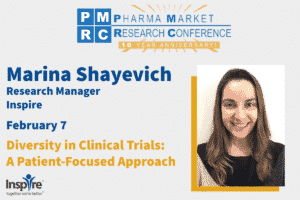[vc_row][vc_column][mpc_textblock content_width=”100″ font_preset=”preset_0″ margin_divider=”true” margin_css=”margin-top:20px;margin-bottom:20px;”]Email in Healthcare: Reaching the Most Engaged Patients with your DTC Campaigns
[/mpc_textblock][vc_row_inner][vc_column_inner][mpc_image image=”10584″ image_size=”large” image_opacity=”100″ image_inner_border_gap=”0″ effect=”none” image_hover_opacity=”100″ animation_in_type=”transition.expandIn” animation_in_offset=”100″ animation_in_duration=”1850″ animation_in_delay=”0″][/vc_column_inner][/vc_row_inner][mpc_textblock content_width=”100″ margin_divider=”true” margin_css=”margin-top:20px;margin-bottom:20px;” mpc_tooltip__border_divider=”true” mpc_tooltip__padding_divider=”true”]By Odin Soevik
Patients are becoming increasingly involved in managing their own health. While they might not be able to write their own prescriptions, patients are actively seeking out information about new products and treatments, and using it to ask the right questions of their doctors. Getting treatment information into the hands of these patients comes down to carefully managed, targeted-communication. Providers that choose the right balance of tools are in the best position to help patients improve their outcomes.
When it comes to choosing that balance, email remains an essential component. In 2016, 81 % of surveyed consumers said that they looked at their email throughout their day.1 A survey of 2000 patients conducted in 2013 found that 69 percent wanted pharmaceutical companies to communicate with them through email.2 This figure matches a more recent survey, in which two-thirds of respondents -from Baby Boomers to Gen Z -said that email was the most personal channel for receiving communication from brands.3
What kind of communication are these patients looking for? When asked to rate a list of supports and services that patients could receive from pharma, the highest rated service was product information. For those who had received this information from a pharmaceutical company (only 43% of patients surveyed), more than 80% expressed satisfaction and a desire for more.2
Reaching the right patients is often the most difficult step in any healthcare DTC campaign. Inspire makes it easier with two flexible email products, Activity Summaries and Targeted Emails, which can be deployed to patients in any of our 200+ support communities. Members of each of these communities have proven to be highly receptive towards email offers, including our Advanced Breast Cancer Support Community with an opt-in rate of 83%. In a comparison of a group of publishers, conducted by a digital agency for a major brand, Inspire’s Advanced Breast Cancer Support Community audience was rated highest in quality in the initial two months of their campaign.5
As it gets increasingly difficult for reps to see physicians,4 the consistent attention driven by email campaigns has become more valuable than ever. Inspires email products enhance your DTC marketing plans by keeping your messages top of mind, elevating brand stories, and building real patient trust. To learn how we can fit in your campaigns, take a look at our Activity Summary Emails, and contact us for more information.
ANNOUNCEMENTS:
If you are at the Pharma Market Research Conference PMRC on February 7, you don’t want to miss Inspire’s Research Manager, Marina Shayevich. 
Marina will also present her findings at a webinar titled, Diversity in Clinical Trials: Understanding Patient and Caregiver Perspectives on February 21 at 2 p.m. ET/ 1 p.m. CT/ 11 a.m. PT.
[/mpc_textblock][/vc_column][/vc_row][vc_row css=”.vc_custom_1483606399832{padding-top: 20px !important;padding-bottom: 20px !important;}”][vc_column][vc_row_inner css=”.vc_custom_1496685033252{padding-bottom: 40px !important;}”][vc_column_inner width=”2/3″][mpc_textblock content_width=”100″ font_preset=”preset_2″ margin_divider=”true” margin_css=”margin-top:20px;margin-bottom:20px;”]See our case study,“Inspire Surpasses Other Publishing Platforms in Audience Quality”[/mpc_textblock][mpc_button preset=”preset_1″ block=”true” url=”url:https%3A%2F%2Fcorp.inspire.com%2Fresource%2Faudience-quality-inspire-promote%2F|||” font_preset=”preset_1″ font_color=”#ffffff” font_transform=”none” font_align=”center” title=”Download Case Study” icon=”fa fa-angle-right” icon_color=”#ffffff” icon_size=”14″ icon_effect=”stay-left” icon_gap=”20″ background_color=”#084a8e” border_css=”border-radius:2px;” padding_divider=”true” padding_css=”padding-top:10px;padding-right:20px;padding-bottom:10px;padding-left:20px;” margin_divider=”true” margin_css=”margin-top:30px;” hover_font_color=”#ffffff” hover_icon_color=”#ffffff” hover_background_color=”#116eba”][/vc_column_inner][vc_column_inner width=”1/3″][mpc_image image=”9923″ image_link=”url:https%3A%2F%2Fcorp.inspire.com%2Fresource%2Faudience-quality-inspire-promote%2F|||” image_size=”large” image_opacity=”100″ image_inner_border_gap=”0″ effect=”none” image_hover_opacity=”100″][/vc_column_inner][/vc_row_inner][flipbook-shelf ids=”humanizing_the_brand_experience, insights_from_engaged_patients, expert_by_experience_2016, expert_by_experience_2015, expert_by_experience_2014, case_studies_using_multimodal_research, case_study_prostate_cancer_consumer_support_group_survey, case_study_sleep_disorders_private_research_community”][mpc_callout layout=”style_8″ title_font_preset=”preset_5″ content_width=”100″ content_font_preset=”preset_2″ icon_disable=”true” background_color=”#e8e8e8″ border_css=”border-width:5px;border-color:#d3d3d3;border-style:solid;” padding_css=”padding:15px;” mpc_button__preset=”preset_1″ mpc_button__block=”true” mpc_button__url=”url:%2Fresources|||” mpc_button__font_preset=”preset_1″ mpc_button__font_color=”#ffffff” mpc_button__font_transform=”none” mpc_button__font_align=”center” mpc_button__title=”Learn More” mpc_button__icon=”fa fa-angle-right” mpc_button__icon_color=”#ffffff” mpc_button__icon_size=”14″ mpc_button__icon_effect=”stay-left” mpc_button__icon_gap=”20″ mpc_button__background_color=”#47aff3″ mpc_button__border_css=”border-radius:2px;” mpc_button__padding_divider=”true” mpc_button__padding_css=”padding-top:10px;padding-right:20px;padding-bottom:10px;padding-left:20px;” mpc_button__margin_divider=”true” mpc_button__margin_css=”margin-top:10px;” mpc_button__hover_font_color=”#ffffff” mpc_button__hover_icon_color=”#ffffff” mpc_button__hover_background_color=”#116eba”]Inspire offers a trusted community to patients and caregivers. Our goal with this blog, this website and our content is to provide the life science industry access to the true, authentic patient voice. In so doing, we support faithful operationalization of patient-centricity. Take a look at our case studies, eBooks and news outlet coverage.[/mpc_callout][mpc_textblock content_width=”100″ font_preset=”preset_2″ margin_divider=”true” margin_css=”margin-top:20px;margin-bottom:20px;”]References:
1 https://www.statista.com/statistics/547539/e-mail-usage-sessions-consumers-usa/
2 https://www.accenture.com/gr-en/~/media/Accenture/Conversion-Assets/DotCom/Documents/Global/PDF/Industries_12/Accenture-Great-Expectations-Why-Pharma-Companies-Cant-Ignore-Patient-Services-Survey.pdf
3 https://www.bluecore.com/resources/millennials-engage-brands-report-2016/
4 https://www.ama.org/publications/eNewsletters/MHSNewsletter/Pages/pharmaceutical-sales-rep-use-data-visits-decline.aspx
5 https://corp.inspire.com/blog/patient-engagement-audience-quality/
[/mpc_textblock][/vc_column][/vc_row]